 Right Now #10: James Gunn – The strange thing about this choice is that I go back and forth on Gunn. I’ve appreciated him from afar, but he’s been hit or miss for me. Guardians of the Galaxy 2, for example, was one of the biggest disappointments I’ve had in a theater in a while. With that said, Gunn is one of the most unique writers out there and has an amazing ability to infuse genuine weirdness into big budget mainstream movies. Most big movies are paint-by-numbers. Gunn’s movies are never that. Guardians of the Galaxy literally has a talking raccoon who’s best friends with a tree. But the project that tipped the scales for me and put Gunn on this list was Peacemaker, which is probably going to end up being my favorite TV show of the year. The dialogue in that show is exceptional. And Gunn continues to execute one of the hardest skills in screenwriting, which is to create multiple memorable characters in a single show or movie. That’s the true test of a screenwriter – their ability to create characters who resonate with audiences. Any screenwriter who’s given this craft any time at all knows how hard that is to do, and James Gunn makes it look effortless time and time again. The man gave a full-on heartfelt arc to a character named Polka-Dot Man.
Right Now #10: James Gunn – The strange thing about this choice is that I go back and forth on Gunn. I’ve appreciated him from afar, but he’s been hit or miss for me. Guardians of the Galaxy 2, for example, was one of the biggest disappointments I’ve had in a theater in a while. With that said, Gunn is one of the most unique writers out there and has an amazing ability to infuse genuine weirdness into big budget mainstream movies. Most big movies are paint-by-numbers. Gunn’s movies are never that. Guardians of the Galaxy literally has a talking raccoon who’s best friends with a tree. But the project that tipped the scales for me and put Gunn on this list was Peacemaker, which is probably going to end up being my favorite TV show of the year. The dialogue in that show is exceptional. And Gunn continues to execute one of the hardest skills in screenwriting, which is to create multiple memorable characters in a single show or movie. That’s the true test of a screenwriter – their ability to create characters who resonate with audiences. Any screenwriter who’s given this craft any time at all knows how hard that is to do, and James Gunn makes it look effortless time and time again. The man gave a full-on heartfelt arc to a character named Polka-Dot Man.
 The Replacement: The Daniels – Just like Gunn, these guys have created a writing language unto themselves. They operate in a reality that’s in a different time and space from our own. I mean, a literal quote from one of them is: “Anyone can make a good movie out of a good idea. We like to take the worst idea possible and make a great movie out of that.” That would certainly explain Swiss Army Man, whose main character is a dead farting corpse. I just saw their latest film, Everything Everywhere All At Once, and I’m still processing it. It’s like a candy coated sundae at the world’s funnest funeral shoved into 500 years of philosophy dangled on top of every Dr. Seuss book ever written until it dissolves into fairy dust that perpetually falls on you wherever you go. But it isn’t just its weirdness that makes it great. It’s that the Daniels are so committed to character development that even if you stripped away all the movie’s shenanigans, you’d still have yourself one of the most heartfelt movies of the year. My only question with whether these two become stars befitting their talent or not is if they’ll play by the Hollywood handbook. The Daniels were not meant for notes. And any time you make one of these Hollywood movies, you’re going to get notes. But I think they’re so talented that they’ll find a way into the system, much like Gunn eventually did.
The Replacement: The Daniels – Just like Gunn, these guys have created a writing language unto themselves. They operate in a reality that’s in a different time and space from our own. I mean, a literal quote from one of them is: “Anyone can make a good movie out of a good idea. We like to take the worst idea possible and make a great movie out of that.” That would certainly explain Swiss Army Man, whose main character is a dead farting corpse. I just saw their latest film, Everything Everywhere All At Once, and I’m still processing it. It’s like a candy coated sundae at the world’s funnest funeral shoved into 500 years of philosophy dangled on top of every Dr. Seuss book ever written until it dissolves into fairy dust that perpetually falls on you wherever you go. But it isn’t just its weirdness that makes it great. It’s that the Daniels are so committed to character development that even if you stripped away all the movie’s shenanigans, you’d still have yourself one of the most heartfelt movies of the year. My only question with whether these two become stars befitting their talent or not is if they’ll play by the Hollywood handbook. The Daniels were not meant for notes. And any time you make one of these Hollywood movies, you’re going to get notes. But I think they’re so talented that they’ll find a way into the system, much like Gunn eventually did.
 Right Now #9: Christopher McQuarrie – Who can deny McQuarrie’s track record. He won an Oscar (for The Usual Suspects) at just 27 years old. While he would go on to have a somewhat rocky decade after that Oscar win, his career was resurrected with 2008’s Valkyrie. That led to Jack Reacher and one of the 10 best sci-fi scripts ever written, Edge of Tomorrow. Since then he’s become the general for the Mission Impossible franchise. What McQuarrie brings to the table is an exceptional understanding of the screenwriting matrix, all the hundreds of little things that make a script work. For example, he knows that if two tough people are talking in a room, that the scene becomes infinitely more tense if one of them is cleaning a gun (scene from Jack Reacher). And I love that he continues to grow as a writer, always adding new skills. The most recent addition to his repertoire is his set piece writing. He’s a guy who looks to deconstruct the set piece so that you get what you want in a way you don’t expect. Take a look at the bathroom fight scene in Mission Impossible Fallout to see what I’m talking about. Finally, just as a personality, he kind of reminds me of the feisty writers of old. He’s got a little bit of Hemingway in him. He’s got a little bit of Eszterhas in him. I know this firsthand as he’s come after me a few times! I think the easiest way to determine who the best screenwriters are is to ask, if you had two million bucks to hire a screenwriter for your movie, who would you hire? If I were making a big action movie, I’m calling Christopher McQuarrie’s agent faster than you can say ‘slugline.’
Right Now #9: Christopher McQuarrie – Who can deny McQuarrie’s track record. He won an Oscar (for The Usual Suspects) at just 27 years old. While he would go on to have a somewhat rocky decade after that Oscar win, his career was resurrected with 2008’s Valkyrie. That led to Jack Reacher and one of the 10 best sci-fi scripts ever written, Edge of Tomorrow. Since then he’s become the general for the Mission Impossible franchise. What McQuarrie brings to the table is an exceptional understanding of the screenwriting matrix, all the hundreds of little things that make a script work. For example, he knows that if two tough people are talking in a room, that the scene becomes infinitely more tense if one of them is cleaning a gun (scene from Jack Reacher). And I love that he continues to grow as a writer, always adding new skills. The most recent addition to his repertoire is his set piece writing. He’s a guy who looks to deconstruct the set piece so that you get what you want in a way you don’t expect. Take a look at the bathroom fight scene in Mission Impossible Fallout to see what I’m talking about. Finally, just as a personality, he kind of reminds me of the feisty writers of old. He’s got a little bit of Hemingway in him. He’s got a little bit of Eszterhas in him. I know this firsthand as he’s come after me a few times! I think the easiest way to determine who the best screenwriters are is to ask, if you had two million bucks to hire a screenwriter for your movie, who would you hire? If I were making a big action movie, I’m calling Christopher McQuarrie’s agent faster than you can say ‘slugline.’
 The Replacement: Shay Hatten – Shay Hatten is the youngest screenwriter on this list, at just 28 years old. He broke through back in 2017 (at 23!), when his script about a coked up Stephen King trying to direct his first movie, Maximum Overdrive, made the Black List. A year later he wrote a killer fun script called Ballerina. That got him a job to write John Wick 3. He’s since written John Wick 4 and 5. Ballerina is going to get made. He wrote Army of the Dead for Zack Snyder and also Snyder’s newest film, Rebel Moon. This is the hot young screenwriter that everybody wants for their big action movie and he hasn’t hit 30 yet. Of all the the big future screenwriters on this list, Hatten may become the biggest of all. I don’t remember this level of success this early for a screenwriter since another “Sha” writer, Shane Black, came onto the scene. Not a bad screenwriter to be compared to.
The Replacement: Shay Hatten – Shay Hatten is the youngest screenwriter on this list, at just 28 years old. He broke through back in 2017 (at 23!), when his script about a coked up Stephen King trying to direct his first movie, Maximum Overdrive, made the Black List. A year later he wrote a killer fun script called Ballerina. That got him a job to write John Wick 3. He’s since written John Wick 4 and 5. Ballerina is going to get made. He wrote Army of the Dead for Zack Snyder and also Snyder’s newest film, Rebel Moon. This is the hot young screenwriter that everybody wants for their big action movie and he hasn’t hit 30 yet. Of all the the big future screenwriters on this list, Hatten may become the biggest of all. I don’t remember this level of success this early for a screenwriter since another “Sha” writer, Shane Black, came onto the scene. Not a bad screenwriter to be compared to.
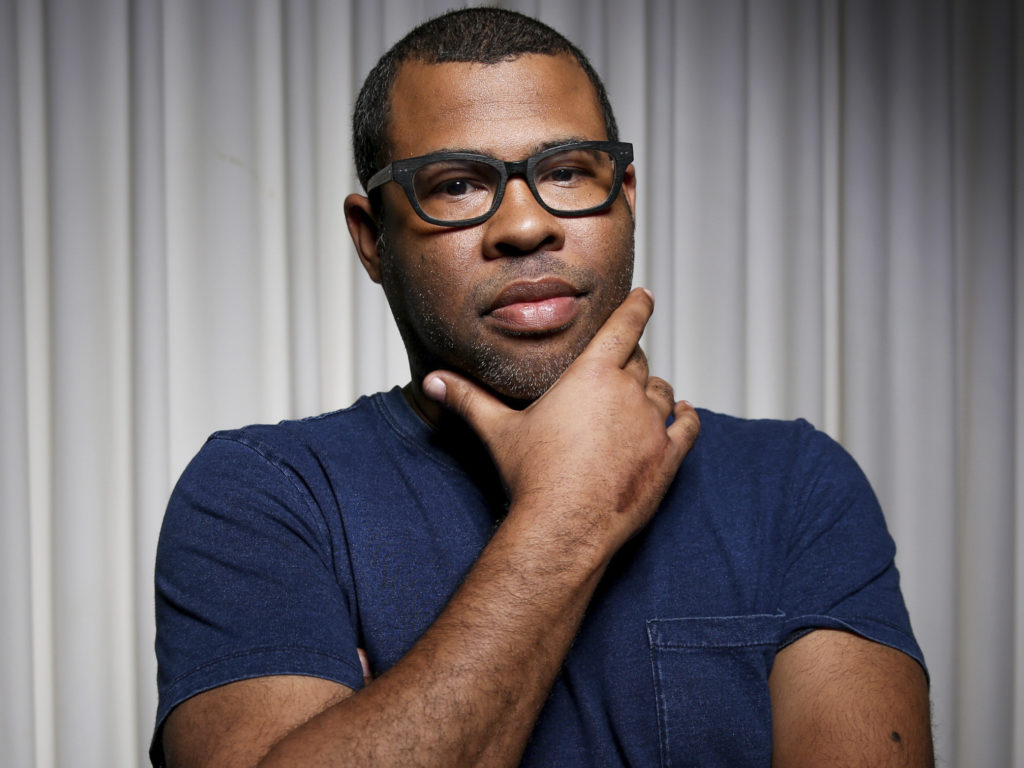 Right Now #8: Jordan Peele – Am I still so blown away by the amazing script for Get Out that I can’t see Peele’s work objectively? Maybe. But let me explain why I included Peele. First, he celebrates the big juicy high concept idea like no other. And to me, the big juicy high concept idea is the heart and soul of the movie business. It’s that “what if” idea that’s led to so many of the most memorable experiences of my life. And two, Peele is one of only a handful of writers who can get people revved up about a movie that isn’t gigantic studio-owned IP. He has access to that rare vein that goes from his brain directly to the zeitgeist. Guys like Spielberg had it. M. Night had it for a brief period. JJ had it. Anyone who gains access to this vein is a best-of contender. If I were Peele, though, I would take a page out of Tarantino’s book and make a movie once every three years instead of once every other year. Also, get out of the TV business. You’re not seriously dedicating yourself to it so it’s only stealing time away from writing new drafts of your feature scripts. “Us” was three to four drafts away from being a horror classic. You would’ve had the time to write those drafts had you not been producing questionable television like, “Weird City.” Despite this, I remain a Peele fan. We’re just a couple of months away from “Nope.” That movie will prove whether I’m right or wrong about including Peele on this list.
Right Now #8: Jordan Peele – Am I still so blown away by the amazing script for Get Out that I can’t see Peele’s work objectively? Maybe. But let me explain why I included Peele. First, he celebrates the big juicy high concept idea like no other. And to me, the big juicy high concept idea is the heart and soul of the movie business. It’s that “what if” idea that’s led to so many of the most memorable experiences of my life. And two, Peele is one of only a handful of writers who can get people revved up about a movie that isn’t gigantic studio-owned IP. He has access to that rare vein that goes from his brain directly to the zeitgeist. Guys like Spielberg had it. M. Night had it for a brief period. JJ had it. Anyone who gains access to this vein is a best-of contender. If I were Peele, though, I would take a page out of Tarantino’s book and make a movie once every three years instead of once every other year. Also, get out of the TV business. You’re not seriously dedicating yourself to it so it’s only stealing time away from writing new drafts of your feature scripts. “Us” was three to four drafts away from being a horror classic. You would’ve had the time to write those drafts had you not been producing questionable television like, “Weird City.” Despite this, I remain a Peele fan. We’re just a couple of months away from “Nope.” That movie will prove whether I’m right or wrong about including Peele on this list.
 The Replacement: Emerald Fennell – Was it Kathleen Kennedy who got a lot of flack for saying, “The Future is Female?” I think she was just echoing what everyone in the studio hallways were already saying. Indeed, there are some killer female screenwriters on the rise. Emerald Fennell probably wrote the best script (Promising Young Woman) I read in 2019, when it made the Black List. Just like Jordan Peele provided us with those ‘wow’ moments in Get Out, so did Fennel In “Promising.” That opening scene when our drunk main character instantly sobers up still gives me shivers. It shouldn’t be surprising, then, that Fennell was recruited into the DC universe as soon as Promising Young Woman hit theaters. She will write the origin story of Zantanna, a female magician who is known to appear in the Justice League Dark series (that of which JJ Abrams is shepherding). Fennell’s voice is so distinct that I can’t imagine a future where she isn’t a writing superstar.
The Replacement: Emerald Fennell – Was it Kathleen Kennedy who got a lot of flack for saying, “The Future is Female?” I think she was just echoing what everyone in the studio hallways were already saying. Indeed, there are some killer female screenwriters on the rise. Emerald Fennell probably wrote the best script (Promising Young Woman) I read in 2019, when it made the Black List. Just like Jordan Peele provided us with those ‘wow’ moments in Get Out, so did Fennel In “Promising.” That opening scene when our drunk main character instantly sobers up still gives me shivers. It shouldn’t be surprising, then, that Fennell was recruited into the DC universe as soon as Promising Young Woman hit theaters. She will write the origin story of Zantanna, a female magician who is known to appear in the Justice League Dark series (that of which JJ Abrams is shepherding). Fennell’s voice is so distinct that I can’t imagine a future where she isn’t a writing superstar.
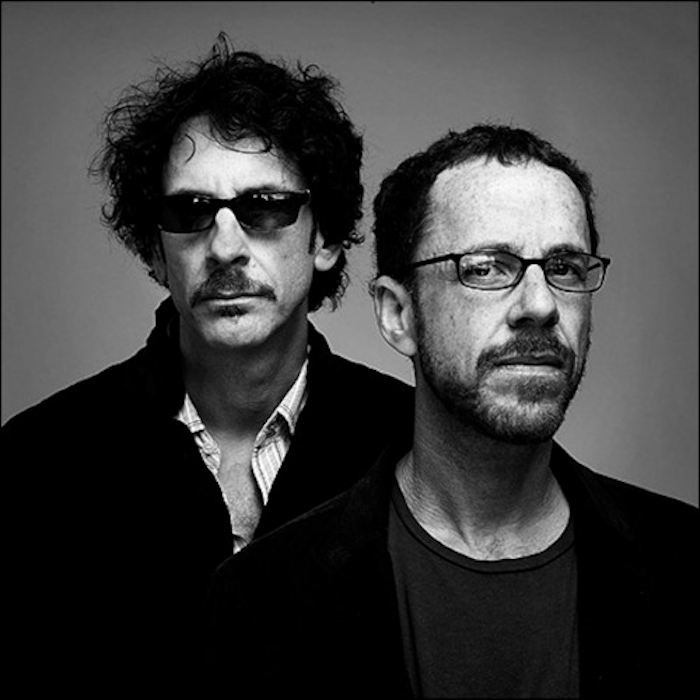 Right Now #7: The Coen Bros – I went back and forth on whether to include this dynamic duo because while they’ve had an amazing career, which includes two screenwriting Oscars, they haven’t had a hit movie in over a decade. Even the recently announced “Drive Away Dykes,” which was hilarious, is a script Ethan and his wife wrote 15 years ago. The thing that tipped the scales for me, however, was their 2018 Netflix collection of shorts, The Ballad of Buster Scruggs. There are three genius short films in that collection (The Ballad of Buster Scruggs, Meal Ticket, and The Gal Who Got Rattled), all of which are exceptionally written. It reminded me that the Coens can still take over a game whenever they want to. Plus it’s hard to think of any writers who can go toe-to-toe with these guys in a screenwriting challenge. They’re always going to write you a stand-out character. They’re always going to come up with the most unique way into a scene. They’re always going to take things in a direction you didn’t think they were going to go in. You bet your screenwriting tushy they’re one of the ten best.
Right Now #7: The Coen Bros – I went back and forth on whether to include this dynamic duo because while they’ve had an amazing career, which includes two screenwriting Oscars, they haven’t had a hit movie in over a decade. Even the recently announced “Drive Away Dykes,” which was hilarious, is a script Ethan and his wife wrote 15 years ago. The thing that tipped the scales for me, however, was their 2018 Netflix collection of shorts, The Ballad of Buster Scruggs. There are three genius short films in that collection (The Ballad of Buster Scruggs, Meal Ticket, and The Gal Who Got Rattled), all of which are exceptionally written. It reminded me that the Coens can still take over a game whenever they want to. Plus it’s hard to think of any writers who can go toe-to-toe with these guys in a screenwriting challenge. They’re always going to write you a stand-out character. They’re always going to come up with the most unique way into a scene. They’re always going to take things in a direction you didn’t think they were going to go in. You bet your screenwriting tushy they’re one of the ten best.
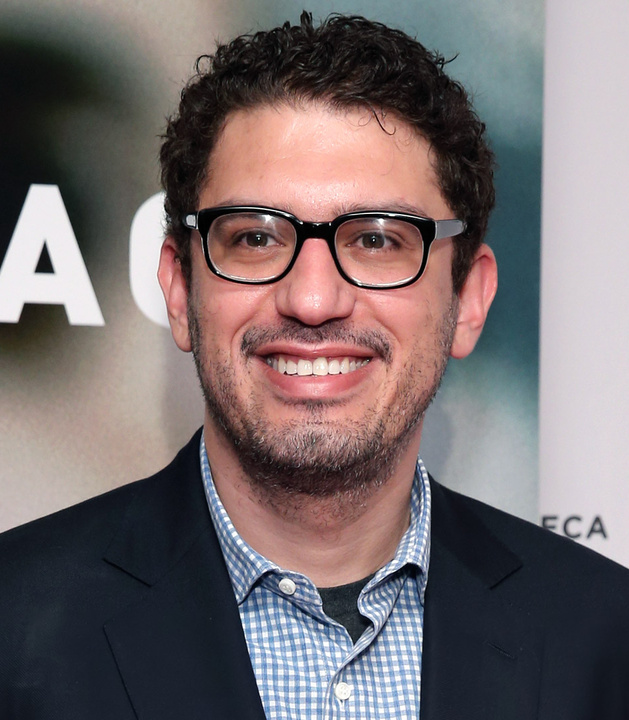 The Replacement: Sam Esmail – I was impressed with Sam’s screenwriting long before he broke onto the scene with Mr. Robot. He just always had interesting concepts and played with screenwriting formula in interesting ways. Much like the Coens, you never truly knew where his stories were going. And I like that Sam is always looking forward, trying to find the hot new thing. When everyone else was staring at podcasts cross-eyed, it was Esmail who, hot off the success of Mr. Robot, decided to adapt podcast, “Homecoming,” for Amazon Prime. The show was a hit for Amazon and even got Julia Roberts to commit to her first TV starring role. Up next he has the high concept, “Leave the World Behind,” which I recently reviewed on the site. Esmail is going to be a force for a long time to come.
The Replacement: Sam Esmail – I was impressed with Sam’s screenwriting long before he broke onto the scene with Mr. Robot. He just always had interesting concepts and played with screenwriting formula in interesting ways. Much like the Coens, you never truly knew where his stories were going. And I like that Sam is always looking forward, trying to find the hot new thing. When everyone else was staring at podcasts cross-eyed, it was Esmail who, hot off the success of Mr. Robot, decided to adapt podcast, “Homecoming,” for Amazon Prime. The show was a hit for Amazon and even got Julia Roberts to commit to her first TV starring role. Up next he has the high concept, “Leave the World Behind,” which I recently reviewed on the site. Esmail is going to be a force for a long time to come.
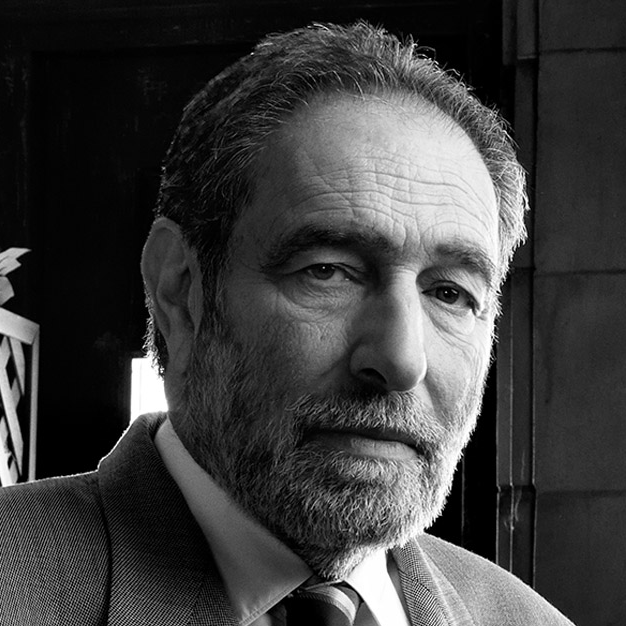 Right Now #6: Eric Roth – Roth has an incredible resume that includes films like Forrest Gump, Benjamin Button, A Star is Born, Dune, Ali, and Munich. But that isn’t even a fraction of the number of unproduced projects he’s written that haven’t been made yet. He’s the first guy the studios call when they have a big movie that needs a level of gravitas, gravitas these candy-coated Marvel screenwriters couldn’t find if they were placed in the middle of the Library of Alexandria. Roth’s secret sauce is his unique approach to screenwriting. As he was never formally taught (there were no screenwriting books published when he started), he doesn’t write with structure or character arcs or dialogue tricks in mind. He writes completely on instinct. When asked what he does when he runs into a story problem, Roth famously answered, “I change the weather.” This is why you rarely feel any gears grinding beneath a Roth script. They’re written on gut and therefore there’s no artificial sweetener giving the story that stale aftertaste. His creativity goes directly from his mind to the page without stopping. There’s nobody out there like Roth. Nobody.
Right Now #6: Eric Roth – Roth has an incredible resume that includes films like Forrest Gump, Benjamin Button, A Star is Born, Dune, Ali, and Munich. But that isn’t even a fraction of the number of unproduced projects he’s written that haven’t been made yet. He’s the first guy the studios call when they have a big movie that needs a level of gravitas, gravitas these candy-coated Marvel screenwriters couldn’t find if they were placed in the middle of the Library of Alexandria. Roth’s secret sauce is his unique approach to screenwriting. As he was never formally taught (there were no screenwriting books published when he started), he doesn’t write with structure or character arcs or dialogue tricks in mind. He writes completely on instinct. When asked what he does when he runs into a story problem, Roth famously answered, “I change the weather.” This is why you rarely feel any gears grinding beneath a Roth script. They’re written on gut and therefore there’s no artificial sweetener giving the story that stale aftertaste. His creativity goes directly from his mind to the page without stopping. There’s nobody out there like Roth. Nobody.
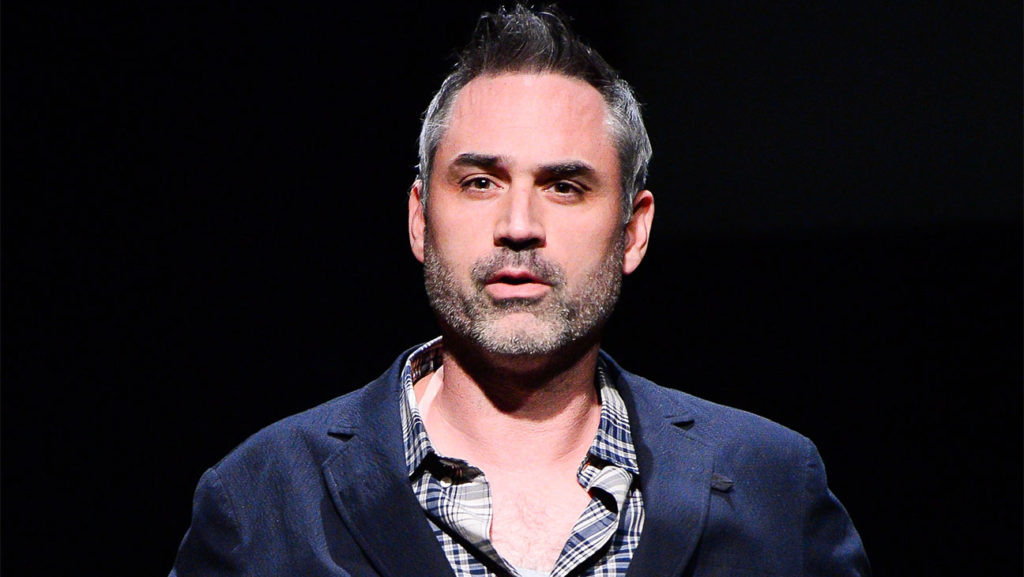 The Replacement: Alex Garland – One of the ways you identify the truly good writers is that when you read their scripts, they feel unlike anything else out there. Garland’s reflective tortured stories exhibit a pain that goes way deeper than your average screenplay. Check out Devs on Hulu if you want a dose of this. Garland manages to transition the series’ central villain, tech giant, Forest, into its protagonist by the end of the show. It’s these types of weird industry-challenging creative choices that make Garland’s work so powerful. He’s thoughtful. He’s calculated. He’s brave. He might be the most intelligent person on this list. I know it’s weird to include a 51 year old on any “future of” list, but ever since Garland started taking control of his career as a writer-director (something he did not do because he wanted to direct, but rather he realized it was the only way to protect his writing), he’s elevated himself to a new level. His next film, “Men,” looks creepy as hell. After that, he’ll be tackling a movie about civil war in the US.
The Replacement: Alex Garland – One of the ways you identify the truly good writers is that when you read their scripts, they feel unlike anything else out there. Garland’s reflective tortured stories exhibit a pain that goes way deeper than your average screenplay. Check out Devs on Hulu if you want a dose of this. Garland manages to transition the series’ central villain, tech giant, Forest, into its protagonist by the end of the show. It’s these types of weird industry-challenging creative choices that make Garland’s work so powerful. He’s thoughtful. He’s calculated. He’s brave. He might be the most intelligent person on this list. I know it’s weird to include a 51 year old on any “future of” list, but ever since Garland started taking control of his career as a writer-director (something he did not do because he wanted to direct, but rather he realized it was the only way to protect his writing), he’s elevated himself to a new level. His next film, “Men,” looks creepy as hell. After that, he’ll be tackling a movie about civil war in the US.
 Right Now #5: Taika Waititi – If there’s a theme to today’s screenwriting superheroes, it’s that they all have their own unique voice. Voice, as a reminder to newbies, is the unique personality a writer inserts into both his prose and the story itself, and almost always centers around the writer’s unique brand of humor. Taika arguably uses humor in a more interesting way than all of today’s writers. Just look at what he does with Hitler in JoJo Rabbit. A quick diversion if you will allow me: Whenever I read a great screenplay, the movie never lives up to it. For that reason, I’ve gotten into the habit of avoiding watching movies for scripts I loved. This is what I did when JoJo Rabbit came out. I said, the movie can’t possibly be as good as the screenplay, which I felt was perfect. So I didn’t see the movie when it came out. I didn’t see the movie when it came to digital either. I’d honestly planned on never seeing it. But one day it popped up on a streaming service and I thought, what the hell. JoJo Rabbit turned out to be the only film I’ve watched where the movie was actually better than the great screenplay. I was fucking bawling by the end of that movie even though I knew everything that was going to happen. Such is the effect Taika has on me. Between the feature version of What We Do In the Shadows to Hunt for the Wilderpeople to his older stuff like Eagle Vs. Shark, this guy is a superstar. And now that Hollywood has given him the keys to the city, we’re going to see just how high his star can rise. Next up on his list? Saving Star Wars!
Right Now #5: Taika Waititi – If there’s a theme to today’s screenwriting superheroes, it’s that they all have their own unique voice. Voice, as a reminder to newbies, is the unique personality a writer inserts into both his prose and the story itself, and almost always centers around the writer’s unique brand of humor. Taika arguably uses humor in a more interesting way than all of today’s writers. Just look at what he does with Hitler in JoJo Rabbit. A quick diversion if you will allow me: Whenever I read a great screenplay, the movie never lives up to it. For that reason, I’ve gotten into the habit of avoiding watching movies for scripts I loved. This is what I did when JoJo Rabbit came out. I said, the movie can’t possibly be as good as the screenplay, which I felt was perfect. So I didn’t see the movie when it came out. I didn’t see the movie when it came to digital either. I’d honestly planned on never seeing it. But one day it popped up on a streaming service and I thought, what the hell. JoJo Rabbit turned out to be the only film I’ve watched where the movie was actually better than the great screenplay. I was fucking bawling by the end of that movie even though I knew everything that was going to happen. Such is the effect Taika has on me. Between the feature version of What We Do In the Shadows to Hunt for the Wilderpeople to his older stuff like Eagle Vs. Shark, this guy is a superstar. And now that Hollywood has given him the keys to the city, we’re going to see just how high his star can rise. Next up on his list? Saving Star Wars!
 The Replacement: Phoebe Waller-Bridge – Okay, so I admit this is a little confusing because Taika’s probably going to be around for a while. But sticking with the theme of our list, we have to provide him with a replacement, and what better replacement than Waller-Bridge? Like Taika, Waller-Bridge’s writing effortlessly shifts between making you spit-take and making you cry your eyes out. Go watch the opening scene of Fleabag Season 1 then the first episode of Season 2 to see what I’m talking about. After Waller-Bridge’s shockingly open introduction into her titular character’s sex life, we get an episode that contains a secret miscarriage during a family dinner. Waller-Bridge had one of those rare double-hit debuts, when she came out with both Fleabag and Killing Eve at the same time. Now she’s got two new big shows coming up, Mr & Mrs Smith and her next under-wraps Amazon show.
The Replacement: Phoebe Waller-Bridge – Okay, so I admit this is a little confusing because Taika’s probably going to be around for a while. But sticking with the theme of our list, we have to provide him with a replacement, and what better replacement than Waller-Bridge? Like Taika, Waller-Bridge’s writing effortlessly shifts between making you spit-take and making you cry your eyes out. Go watch the opening scene of Fleabag Season 1 then the first episode of Season 2 to see what I’m talking about. After Waller-Bridge’s shockingly open introduction into her titular character’s sex life, we get an episode that contains a secret miscarriage during a family dinner. Waller-Bridge had one of those rare double-hit debuts, when she came out with both Fleabag and Killing Eve at the same time. Now she’s got two new big shows coming up, Mr & Mrs Smith and her next under-wraps Amazon show.
 Right Now #4: Christopher Nolan – While people have had legitimate gripes with Nolan’s writing, which can vacillate between bombastic and over-expository, he remains one of a select few who can write an original idea with absolutely zero ties to IP, and get 200 million dollars to make it. Trust me, we don’t want to live in a world where that gets taken away. Because that means the only big-budget movies we’ll get are Marvel, DC, Fast and Furious, and Star Wars. If you’re okay with that, fine. I’m not. Despite his missteps, I still think Nolan is the number one writer in the world for exploring big ideas. From Memento to The Prestige to Inception, he takes these gigantic concepts and plays with them in such interesting ways. I love, for example, that he didn’t stop in Inception at one dream. That you could go to dreams within dreams. It’s that sort of dedication to concept exploration that sets Nolan apart. And, to this day, I still think Memento is a Top 5 ever screenplay. I went back and watched it recently and the complex narrative is so cleverly simplified. Nolan is definitely a superstar.
Right Now #4: Christopher Nolan – While people have had legitimate gripes with Nolan’s writing, which can vacillate between bombastic and over-expository, he remains one of a select few who can write an original idea with absolutely zero ties to IP, and get 200 million dollars to make it. Trust me, we don’t want to live in a world where that gets taken away. Because that means the only big-budget movies we’ll get are Marvel, DC, Fast and Furious, and Star Wars. If you’re okay with that, fine. I’m not. Despite his missteps, I still think Nolan is the number one writer in the world for exploring big ideas. From Memento to The Prestige to Inception, he takes these gigantic concepts and plays with them in such interesting ways. I love, for example, that he didn’t stop in Inception at one dream. That you could go to dreams within dreams. It’s that sort of dedication to concept exploration that sets Nolan apart. And, to this day, I still think Memento is a Top 5 ever screenplay. I went back and watched it recently and the complex narrative is so cleverly simplified. Nolan is definitely a superstar.
 The Replacement: Greta Gerwig – What’s the secondary theme of this list? The future is female! Here we have Nolan, his hard edges, his big handsome male movie stars, his love of guys expressing themselves externally, in the most masculine of ways. And on the other end of the spectrum we’ve got Greta Gerwig, with her soft feminine approach to storytelling. She focuses on the internal, on the angst and emotions going on inside the individual. You can’t discount the one two punch of Ladybird and Little Women, both of which had major awards pushes. Gerwig’s melancholy view of existence feels right for anyone who’s been overwhelmed by the demands of day-to-day life. Since those two films, Hollywood has now gone all in on Greta, giving her access to the single most feminine property in Hollywood – Barbie. I don’t know what’s going to happen with Barbie. I’d be lying if I said it didn’t have the potential to be disastrous. But what that tells me is if Greta pulls a “Lord and Miller” and makes a great movie out of subpar subject matter, she will truly be one of the most powerful forces Hollywood.
The Replacement: Greta Gerwig – What’s the secondary theme of this list? The future is female! Here we have Nolan, his hard edges, his big handsome male movie stars, his love of guys expressing themselves externally, in the most masculine of ways. And on the other end of the spectrum we’ve got Greta Gerwig, with her soft feminine approach to storytelling. She focuses on the internal, on the angst and emotions going on inside the individual. You can’t discount the one two punch of Ladybird and Little Women, both of which had major awards pushes. Gerwig’s melancholy view of existence feels right for anyone who’s been overwhelmed by the demands of day-to-day life. Since those two films, Hollywood has now gone all in on Greta, giving her access to the single most feminine property in Hollywood – Barbie. I don’t know what’s going to happen with Barbie. I’d be lying if I said it didn’t have the potential to be disastrous. But what that tells me is if Greta pulls a “Lord and Miller” and makes a great movie out of subpar subject matter, she will truly be one of the most powerful forces Hollywood.
 Right Now #3: Taylor Sheridan – Not unlike Nolan, Sheridan recognized that as the culture shifted, there was an opportunity to exploit the counter-culture. As Hollywood sprinted towards social issues and politically correct causes, an avenue for masculinity in its purest form became available. That is the DNA of Sheridan’s success. He gives you back the heroes of yesteryear, men who were traumatized by wars as opposed to tweets. While Hell or High Water is the screenplay that put him on the map, and Sicario the movie that first introduced us to his back-to-basics American perspective, it’s been his growing Yellowstone empire at Paramount that is making him one of the most formidable players in show business. Think about that for a second. Taylor Sheridan went from a nobody to a Hollywood titan IN JUST SEVEN YEARS! That’s how long it took him from his Black List debut. Sheridan’s rise is also a look into the future of writing. Sheridan started out with features but eventually moved to the much more lucrative world of television. It isn’t Sicario that’s going to put him in the 9 figure earning bracket. It’s Yellowstone. It’s why I couldn’t ignore television when curating this list.
Right Now #3: Taylor Sheridan – Not unlike Nolan, Sheridan recognized that as the culture shifted, there was an opportunity to exploit the counter-culture. As Hollywood sprinted towards social issues and politically correct causes, an avenue for masculinity in its purest form became available. That is the DNA of Sheridan’s success. He gives you back the heroes of yesteryear, men who were traumatized by wars as opposed to tweets. While Hell or High Water is the screenplay that put him on the map, and Sicario the movie that first introduced us to his back-to-basics American perspective, it’s been his growing Yellowstone empire at Paramount that is making him one of the most formidable players in show business. Think about that for a second. Taylor Sheridan went from a nobody to a Hollywood titan IN JUST SEVEN YEARS! That’s how long it took him from his Black List debut. Sheridan’s rise is also a look into the future of writing. Sheridan started out with features but eventually moved to the much more lucrative world of television. It isn’t Sicario that’s going to put him in the 9 figure earning bracket. It’s Yellowstone. It’s why I couldn’t ignore television when curating this list.
 The Replacement: Christy Hall – Uh, Carson. What could Christy Hall and Taylor Sheridan possibly have in common? First off, for those who don’t know who Christy Hall is, she came onto the scene in 2017 when her script, Daddio, finished in the top 10 of that year’s Black List. The script, about a conversation that occurs between a passenger and a taxi driver from the airport to the hotel, is one of the most honest genuine realistic scripts I’ve ever read. It’s almost as if it was transcribed from a real cab ride. Hall followed that up with the most controversial script of 2018, “Get Home Safe,” a nuclear attack on toxic masculinity. And that, my friends, is why I paired her up with Sheridan. Hollywood would prefer to hide any celebration of masculinity going forward. It wants femininity, especially the kind Hall brings to the table, the kind that isn’t afraid to poke, push, prod, and provoke. Get Home Safe was like the screenwriting national anthem for pissing off dudes. Am I fan of that type of writing? Not really. I’m one of those “dudes.” But I can’t deny the fact that Hall is amazingly talented and in our push, as an industry, to become as divisive as possible, Hall is the poster woman for these types of stories. Her first big credit was Netflix’s, “I Am Not Okay With This,” a unique take on the superhero genre. Next up she’s got Kat Coiro’s (She-Hulk), “The Husband’s Secret,” which will star Blake Lively.
The Replacement: Christy Hall – Uh, Carson. What could Christy Hall and Taylor Sheridan possibly have in common? First off, for those who don’t know who Christy Hall is, she came onto the scene in 2017 when her script, Daddio, finished in the top 10 of that year’s Black List. The script, about a conversation that occurs between a passenger and a taxi driver from the airport to the hotel, is one of the most honest genuine realistic scripts I’ve ever read. It’s almost as if it was transcribed from a real cab ride. Hall followed that up with the most controversial script of 2018, “Get Home Safe,” a nuclear attack on toxic masculinity. And that, my friends, is why I paired her up with Sheridan. Hollywood would prefer to hide any celebration of masculinity going forward. It wants femininity, especially the kind Hall brings to the table, the kind that isn’t afraid to poke, push, prod, and provoke. Get Home Safe was like the screenwriting national anthem for pissing off dudes. Am I fan of that type of writing? Not really. I’m one of those “dudes.” But I can’t deny the fact that Hall is amazingly talented and in our push, as an industry, to become as divisive as possible, Hall is the poster woman for these types of stories. Her first big credit was Netflix’s, “I Am Not Okay With This,” a unique take on the superhero genre. Next up she’s got Kat Coiro’s (She-Hulk), “The Husband’s Secret,” which will star Blake Lively.
 Right Now #2: Aaron Sorkin – Is there anyone else on the planet who can make a 180 page script read like it’s 90 pages? Sorkin, who’s a playwright at heart, eschews the belief that movies should be about showing and not telling. Instead, whether it’s on purpose or not, Sorkin tells, tells, and then tells some more. Of course, when your dialogue is as good as Sorkin’s, it’s easy to break the most harrowed rule in screenwriting. I’m sure some will say Sorkin’s passed his ‘used by’ date but I think as long as this guy is writing, he’s one of the best. Both Steve Jobs and Molly’s Game are decidedly underrated scripts. To date, Steve Jobs is probably the most clever biopic ever written. The choice to condense Jobs’s life into his three biggest Apple presentations was a stroke of genius. If there’s a knock on Sorkin, it’s that his scripts tend to feel the same. Lots of walking and talking. They have a very “play”-like feel to them. But dude, come on. Who doesn’t want to read the next Aaron Sorkin script? His scripts are literal teaching manuals for how to approach dialogue. Hell yeah Sorkin makes this list.
Right Now #2: Aaron Sorkin – Is there anyone else on the planet who can make a 180 page script read like it’s 90 pages? Sorkin, who’s a playwright at heart, eschews the belief that movies should be about showing and not telling. Instead, whether it’s on purpose or not, Sorkin tells, tells, and then tells some more. Of course, when your dialogue is as good as Sorkin’s, it’s easy to break the most harrowed rule in screenwriting. I’m sure some will say Sorkin’s passed his ‘used by’ date but I think as long as this guy is writing, he’s one of the best. Both Steve Jobs and Molly’s Game are decidedly underrated scripts. To date, Steve Jobs is probably the most clever biopic ever written. The choice to condense Jobs’s life into his three biggest Apple presentations was a stroke of genius. If there’s a knock on Sorkin, it’s that his scripts tend to feel the same. Lots of walking and talking. They have a very “play”-like feel to them. But dude, come on. Who doesn’t want to read the next Aaron Sorkin script? His scripts are literal teaching manuals for how to approach dialogue. Hell yeah Sorkin makes this list.
 The Replacement: Jesse Armstrong – This might be the biggest no-brainer in the history of lists. Jesse Armstrong, the writer of Succession, whose first two seasons of that show were two of the best seasons of television in the last ten years, probably owes his recent rise to Sorkin. They love to play in that same walking-and-talking powerful people conversing sandbox. The one big difference is that while Sorkin leans towards sweet, Armstrong bathes in salty. He is the king of the expletive-laden insult. Now my British audience will laugh at this pick as Armstrong has 30-some writing credits dating back to 2000. One of those, Peep Show, is iconic over the pond. The future? Really, Carson? But sometimes it takes a while for a writer to find their calling, to hit their breakout “zeitgeist” show. And once you do, you become a force. Armstrong will now try something different as his next project is a movie starring Michael Cera called, “Jonty,” about a coddled kid who joins forces with an old friend to produce a terrible Broadway play.
The Replacement: Jesse Armstrong – This might be the biggest no-brainer in the history of lists. Jesse Armstrong, the writer of Succession, whose first two seasons of that show were two of the best seasons of television in the last ten years, probably owes his recent rise to Sorkin. They love to play in that same walking-and-talking powerful people conversing sandbox. The one big difference is that while Sorkin leans towards sweet, Armstrong bathes in salty. He is the king of the expletive-laden insult. Now my British audience will laugh at this pick as Armstrong has 30-some writing credits dating back to 2000. One of those, Peep Show, is iconic over the pond. The future? Really, Carson? But sometimes it takes a while for a writer to find their calling, to hit their breakout “zeitgeist” show. And once you do, you become a force. Armstrong will now try something different as his next project is a movie starring Michael Cera called, “Jonty,” about a coddled kid who joins forces with an old friend to produce a terrible Broadway play.
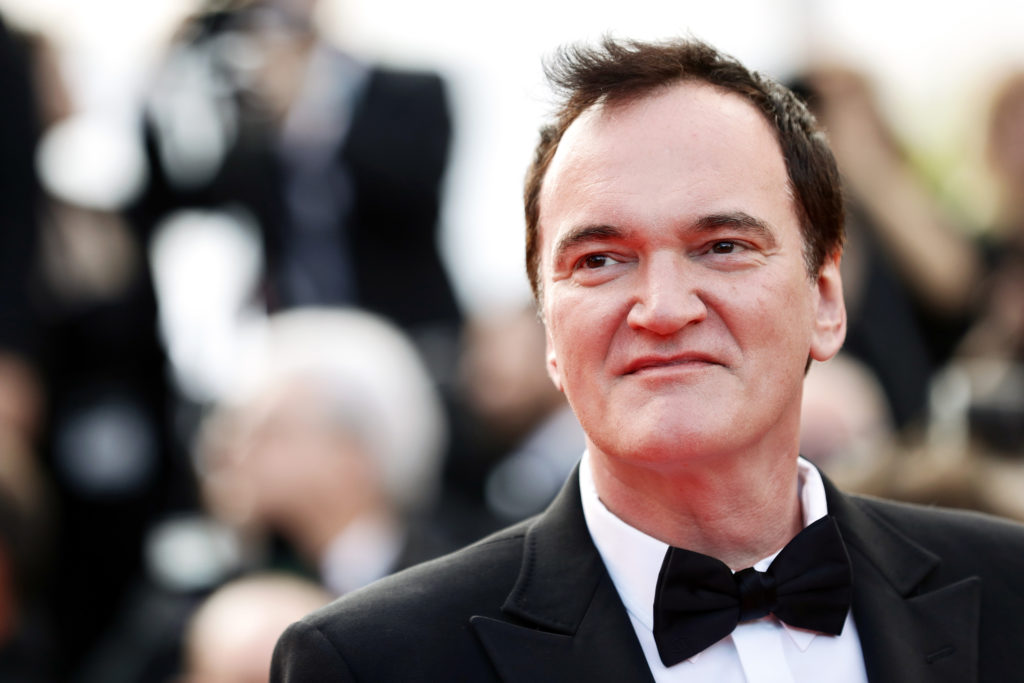 Right Now #1: Quentin Tarantino – There is nobody on this list who holds a candle to Tarantino’s dialogue. There is nobody on this list who holds a candle to Tarantino’s scene-writing. And when it comes to characters, well, most writers on this list haven’t created more memorable characters in their entire career than Tarantino has in a single one of his movies. He takes more chances than anyone else. He created his own genre. You never know where his stories are going. This guy doesn’t have any rivals. Two personal experiences stand out to me whenever I think of Tarantino’s greatness. Experience 1: I was sitting in Once Upon a Time in Hollywood, which is a movie about an actor whose career is on the downslide, and smack dab in the middle of the movie Tarantino switches over into another universe and gives us an amazing 20 minute short horror film! He just switched genres for 20 minutes!!! Then went right back to the story he was telling. Who else can pull that off besides Tarantino? Experience 2: I tried to watch The Hateful Eight once, got bored, and gave up on it, figuring it was a rare dud from the established writer-director. But I checked it out several months later and discovered I turned it off right before the major twist happened that turned it into one of the coolest and most fun movies of the year. It reminded me that you never count Tarantino out. He’s always got a plan, even when it appears he doesn’t. In my opinion, this guy is the best screenwriter in all of Hollywood and nobody else comes close.
Right Now #1: Quentin Tarantino – There is nobody on this list who holds a candle to Tarantino’s dialogue. There is nobody on this list who holds a candle to Tarantino’s scene-writing. And when it comes to characters, well, most writers on this list haven’t created more memorable characters in their entire career than Tarantino has in a single one of his movies. He takes more chances than anyone else. He created his own genre. You never know where his stories are going. This guy doesn’t have any rivals. Two personal experiences stand out to me whenever I think of Tarantino’s greatness. Experience 1: I was sitting in Once Upon a Time in Hollywood, which is a movie about an actor whose career is on the downslide, and smack dab in the middle of the movie Tarantino switches over into another universe and gives us an amazing 20 minute short horror film! He just switched genres for 20 minutes!!! Then went right back to the story he was telling. Who else can pull that off besides Tarantino? Experience 2: I tried to watch The Hateful Eight once, got bored, and gave up on it, figuring it was a rare dud from the established writer-director. But I checked it out several months later and discovered I turned it off right before the major twist happened that turned it into one of the coolest and most fun movies of the year. It reminded me that you never count Tarantino out. He’s always got a plan, even when it appears he doesn’t. In my opinion, this guy is the best screenwriter in all of Hollywood and nobody else comes close.
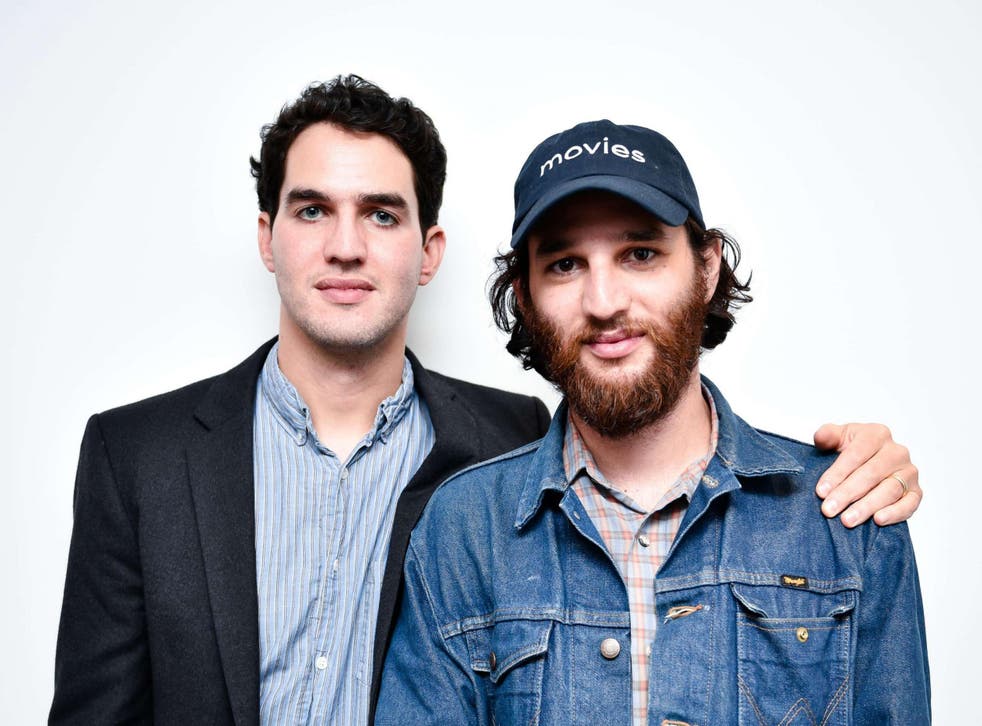 The Replacement: The Safdie Brothers – I remember when I first saw Good Time in an advance screening with no heads up on what I was getting into. I was blown away. I was even more blown away, two years later, by the directors’ writing habits, which included over 100 drafts of Uncut Gems. Their movies may seem improvised and unscripted, but that’s only because they do an ungodly amount of preparation, on both the writing and directing end, to make it seem that way. That’s when you know you’re a great screenwriter, when your dialogue is imperceptible from real life. These two bring an energy to the page that I don’t know if anyone in the next 20 years is going to be able to rival. Go check out Good Time. There’s a scene about 60 minutes in where this random drug dealer shows up and we go into this wild ten minute flashback of how this drug dealer ends up in our protagonists’ car. The randomness of that sequence combined with the fast-talking character combined with the non-linear flashback combined with the excessive focus on a character who, technically, had nothing to do with the movie, reminded me of early Tarantino. While I still don’t think anybody can hold a candle to Tarantino, I have a feeling these two can satisfy the same audience.
The Replacement: The Safdie Brothers – I remember when I first saw Good Time in an advance screening with no heads up on what I was getting into. I was blown away. I was even more blown away, two years later, by the directors’ writing habits, which included over 100 drafts of Uncut Gems. Their movies may seem improvised and unscripted, but that’s only because they do an ungodly amount of preparation, on both the writing and directing end, to make it seem that way. That’s when you know you’re a great screenwriter, when your dialogue is imperceptible from real life. These two bring an energy to the page that I don’t know if anyone in the next 20 years is going to be able to rival. Go check out Good Time. There’s a scene about 60 minutes in where this random drug dealer shows up and we go into this wild ten minute flashback of how this drug dealer ends up in our protagonists’ car. The randomness of that sequence combined with the fast-talking character combined with the non-linear flashback combined with the excessive focus on a character who, technically, had nothing to do with the movie, reminded me of early Tarantino. While I still don’t think anybody can hold a candle to Tarantino, I have a feeling these two can satisfy the same audience.
The ‘Almost Made It’ List: Donald Glover, James Cameron, Judd Apatow, Derek Kolstad, Chris Morgan, David O Russel, Martin McDonaugh, Tina Fey, Shonda Rhimes, Ryan Murphy, Steven Zallian, Woody Allen, Christopher Markus and Stephen McFeely, Christopher Miller and Phil Lord, Rhett Reese and Paul Wernick, Greg Daniels, Dan Harmon, Mike White, Isa Rae, John Logan, David Koepp, Charlie Kaufman, Brian Duffield, Adam McKay, Guillermo del Toro, Noah Baumbach, Noah Hawley, Charlie Brooker, and Alan Yang.
Today’s script just may be the ‘thinking man’s Die Hard.’
Genre: Action
Premise: A naval engineer and her crew find themselves trapped in a deadly game on a shipping vessel in the middle of the Atlantic when they learn a series of car bombs are hidden amongst the thousands of vehicles on board.
About: This was one my favorite concepts from last year’s Black List. Justin Piasecki is an Iowa-born writer. He was a 2016 Nicholl winner with his script, “Death of an Ortolan.” Here’s the logline for that one: “A disgraced White House chef is discovered decades later preparing meals for prisoners on death row, but he risks a chance at redemption when he befriends an inmate whose guilt appears doubtful.”
Writer: Justin Piasecki
Details: 117 pages
 This feels like a Jessica Chastain role.
This feels like a Jessica Chastain role.
Contained action thrillers.
One of the most valuable genres for the aspiring screenwriter.
It’s a genre that allows writers to show off their action chops, even if they must do so in a clever budget-friendly manner. No fights on top of the Statue of Liberty here.
As this was one of my favorite concepts from the Black List, I was excited to dive in.
Let’s check it out together.
40 year old Jodie Donnelly is a port captain for vehicle cargo ships. She operates on the big boys, the ships with 12 football-sized field-levels of cars lined up bumper to bumper. This is not a job for the feint-hearted, however. It requires an incredible amount of mathematical knowledge, as if the cars aren’t placed in such a way where the distribution of weight is even, the boat will tilt and sink.
In fact, that very thing happened two years ago to a ship Jodie was responsible for. She’s back in the saddle though, port captaining the Norfolk Emperor, which is heading out of Chesapeake Bay this morning.
Upon last minute inspections, she runs into an old co-worker, Felson, a man who was on that boat that went down two years ago. And with it, his son drowned, as he was also a worker on that boat. Before Jodie can say anything, Felson suspiciously hurries off the boat and drives away. That was weird, Jodie thinks.
She finds out *how* weird a few hours later when they’re out to sea. One of the cars on the ship blows up. At first they assume it’s a gas leak. But not long after the explosion, they get a call from the Navy, who just received an e-mail from Felson. After Felson reminds Norfolk of what they did to his son, he explains the situation to them: “By now the crew of the Emperor has discovered the explosive in the car on deck six. There are more hidden amongst the 8355 vehicles on board. If you do nothing, they will blow. If you go looking for them, you will not find them all. In time, the ship will go down.”
This guy just pulled an artificial Titanic on these m*therf**kers. The crew members and company see what’s been laid out before them. They can leave the boat before it sinks or they can stay on the boat in a desperate attempt to locate the rigged cars before they blow. The choice is up to Norfolk. Is your money – in this case 350 million dollars – so precious that you will, once again, let others die to protect it?
Lots of good in this one, guys. To start things off, here’s an early dialogue chunk:
“Okay good morning. We’re going to do the dirty version here and keep this short. We had a reversal of UK itinerary, so we’ll be starting with Glasgow moving back. First on last off. Drivers, Mr. Rooker will have your vehicle assignments. Lashing crews, nothing under a 2000 kilogram break load. You need chains, you need webs, you find the deck captains or you find Mr. Seaver here. Today’s load is… 2087 passenger vehicles, 47 city buses, 49 agricultural combines, 16 light rail subway cars, an electric wind turbine and an installation piece for the Belgium Royal Museum of Art… so check your mirrors. (lowering the binder) Get your rides, scan ‘em in, strap ‘em down. We launch at 18:00.”
You know what that chunk of dialogue tells me? It tells me: I DID MY HOMEWORK. And every time you do your homework and the reader sees it, that reader gains confidence in you. That reader believes the story more. That reader heads deeper into his suspension of disbelief. And this happens so rarely, by the way, that when it does happen in a script, readers immediately know they’re in good hands.
So I knew this was going to be a winner within the first ten pages.
And it continued to prove me right.
One of the reasons these sort of action-thriller “Die Hard” type movies went out of favor for a long time is because the bad guys had such lousy nonsensical motivations that we stopped believing the events in these movies were really happening and simply treated them like they were being written, which is that they were a bunch of nonsense.
So I put a lot of value into bad guy motivations. If a writer has come up with a good motivation for his villain, it usually means he’s put a lot of work into the other parts of his script. Here, we have Felson, who’s mad at his company because, in trying to maximize every single cubic inch of their ships for profit, one of them sunk, killing Felson’s son in the process.
So his motivation for putting these bombs on the ship makes sense. He’s saying that there’s no way they’ll find all the bombs. The ship WILL eventually sink, destroying all its cargo. They have time to get everyone off the ship before that happens, though. So the choice is tied back to his son’s death. Will you learn from your previous mistake and prioritize crew members over profit? Or are you so driven by money that you will, once again, place your employees in harm’s way to secure the bottom line?
That’s actually a very sound and intelligent motivation. And for those of you who think it isn’t, read the next 20 action thriller scripts with me. You’ll see motivations that range from our villain having secret ties to the Yakuza to being the previously unknown twin son of the protagonist.
Another thing I liked about the script was the unique way in which the danger operated. One of the first things the writer sets up is this idea of how these boats can sink. They are dependent on weight distribution. If the cars are packed in the wrong way, it will cause the weight of the boat to shift. And if it shifts too radically, it will sink.
So, when we find ourselves with this problem of cars blowing up, it isn’t like your typical action thriller where the threat to lives is an explosion. The cars in question have been chosen in a specific pattern so that after a certain amount of them blow, the weight will shift and the boat will sink. That’s a situation I’ve never seen before in a script. And if there’s one thing you know that I value, it’s originality. It’s giving the reader things they haven’t seen before. So the more this story unfolded, the cooler it sounded.
The only question I have about this script is, is it too smart for mainstream audiences? You’ve got this really interesting puzzle that needs to be solved. But is the lack of a clear “BIG BOOM KILL PEOPLE” problem going to make people check out? It didn’t make me check out. I was up for the whole ride. I think this script is gnarly. The writer is definitely someone to look out for.
[ ] What the hell did I just read?
[ ] wasn’t for me
[xx] worth the read
[ ] impressive
[ ] genius
What I learned: Time Capsule Actor Inception. One of the tricks you can use to put a clear image of your hero and what kind of person they are into your reader’s head is to use an older famous movie star’s name. So, in this case, we’re introduced to “Jodie,” who’s 40 years old. That’s clearly a choice by the writer to make you think of a 40 year old Jodie Foster. If you had a studly 30 year old male main character, you might name him, “Marlon.” A genius disrupter type? Name him, “Orson.” Obviously, this trick has its limitations. I wouldn’t name a 30 year old character, “Denzel,” as it’s too obvious. The trick is picking a name that’s known, but not too distinct.
What I learned 2: Always use analogies when describing complicated things! In order to explain to the reader why ten cars blowing up on a certain level are bad, the writer has Jodie use this analogy: “We lose ten cars on deck five and none on ten then we’re top-heavy, be like standing on a surfboard with a cinderblock on our head.”
Is Everything Everywhere All At Once the greatest movie ever made?
Genre: Drama/Action/Sci-Fi
Premise: While being audited by the IRS at their offices, a laundry store owner is forced to access the multi-verse to save her broken family.
About: After the Daniels made Swiss Army Man, everybody wanted them, including Marvel. The Daniels don’t do anything, however, unless they can do everything. And Marvel’s offer came with those Marvel handcuffs. So after rebuffing Marvel, they finally put this movie together, getting A24 to finance it. Testing just how inclusive New Hollywood is, the Daniels made a 60 year old Asian woman their lead character. The film has been doing better than any indie film over the last three pandemic-infused years, taking in nearly 20 million dollars at the box office. It currently holds a near-impossible 8.9 IMDB rating (for reference, the universally loved Spider Man No Way Home holds an 8.4 and Oscar-winning Coda holds an 8.0).
Writers: The Daniels
Details: 2 hours and 30 minutes
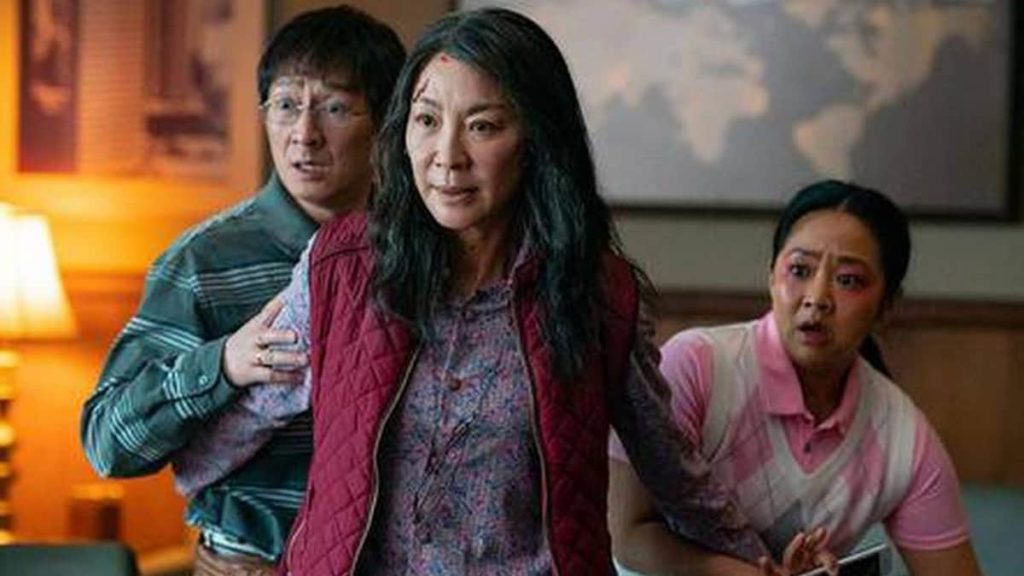
This movie is so weird.
And so cool.
And so unique.
And makes you feel so many things.
Even if you go beyond the story itself, there are crazy things to talk about in this movie.
As I was watching it, I kept having these, “wait a minute” moments. “Wait a minute, is that Jamie Lee Curtis?” “Wait a minute, is that the kid from Indiana Jones and the Temple of Doom?? In a co-starring role???” “Wait a minute, is Jenny Slate really in a fight scene where she’s using her dog on a leash as nunchucks?”
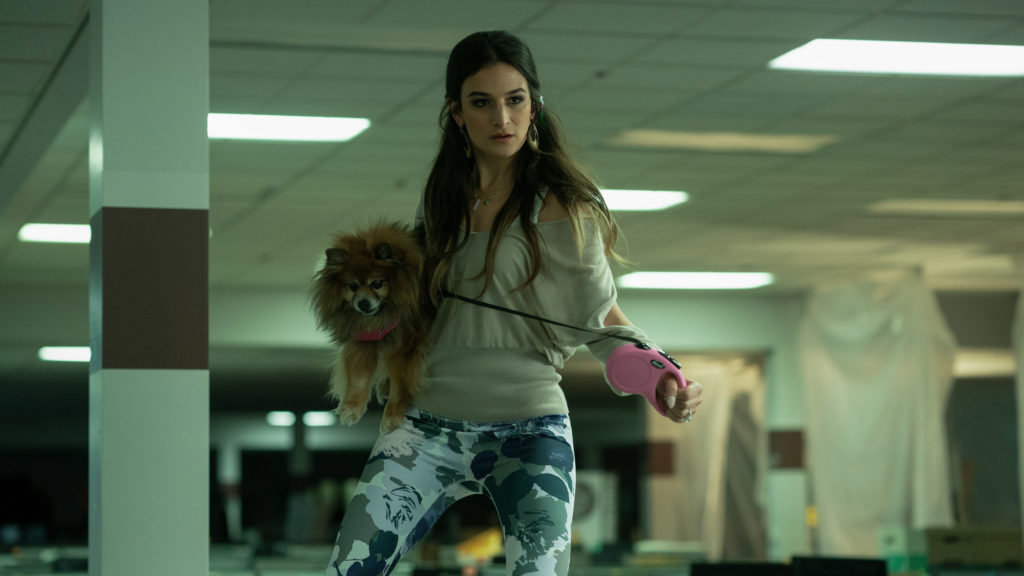
For those who don’t know anything about this movie, it’s about an older laundry store owner, Evelyn, whose being audited by the IRS. The whole family, which includes her gay daughter she disapproves of, Joy, her wimpy husband she doesn’t love anymore, Waymond, and her crusty old father, Gong, go downtown to the IRS Center together to plead their case.
On the way there, Waymond transforms into a smooth decisive version of himself and informs Evelyn that he is not the real Waymond but a different Waymond from another universe and Evelyn is in imminent danger. They must rendezvous in the janitor’s closet and he will explain more there.
Once in the closet, Waymond explains the incredibly complex (but awesome) rules of the multi-verse, in which there are an unlimited number of other universes with different versions of you, each of which you have the power to access (via a ridiculous yet specific triggering act). So if there’s another version of Evelyn who can sing, she can access that singer and sing. If there’s another version of Evelyn who knows kung-fu, she can access that kung-fu and fight.
When the IRS agent (Jamie Lee Curtis) interrupts their meeting and tries to kill Evelyn (since she’s actually another version of the IRS agent from a different universe), Evelyn is forced into action. The family dips in and around the IRS office, where more and more people from other universes inhabit the people in this building, all of whom are determined to take down Evelyn.
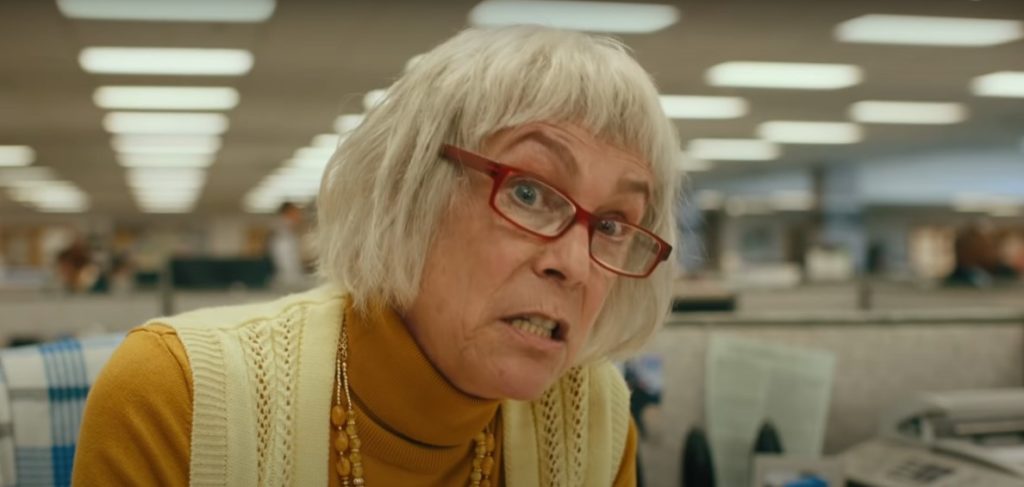
The person who’s controlling all of this is someone named Jobu, who happens to be none other than Joy, Evelyn’s daughter! Joy has come to this universe to destroy her mother, just as she has destroyed all her mothers across all the universes. Evelyn is now tasked with killing her own daughter or finding a way to save her while preventing Joy from killing her. She must achieve this while avoiding an all-knowing all-seeing Oz-like bagel (an “Everything” bagel), which has the power to destroy all versions of both Joy and Evelyn. Talk about a tall task!
Anybody who knows me knows I hate complex stuff. Incredibly complex rules. Complex plots. Complex character storylines. Complex mythologies. I hate it.
All that goes out the window with the Daniels.
I don’t know what it is these two do differently – although I suspect drugs are involved – but despite an overwhelming amount of complexity, their movie still works. And I’ve been thinking about that for the six hours since I saw the movie, trying to figure out why they’re able to pull this off where so many others fail at it.
I think I know the answer.
Their stories are always rooted in CHARACTER and EMOTION. And not passively. Emotion is the core of their films. Both this and Swiss Army Man are about people. In this case, it’s about a mother who doesn’t understand her daughter’s life choices. And it’s about that mother’s father who doesn’t understand his daughter’s life choices. And it’s about this woman checking out of her own marriage with this man who loves her.
Despite a fight that includes two men with butt plugs inserted in their butts, despite a subplot that involves a cook who secretly keeps a raccoon under his chef’s hat who helps him prepare his food, despite a major emotionally-intense scene taking place between two rocks with googly eyes that speak to each other in subtitles… this movie always comes back to the broken family and the attempt for them to reconnect and understand one another.
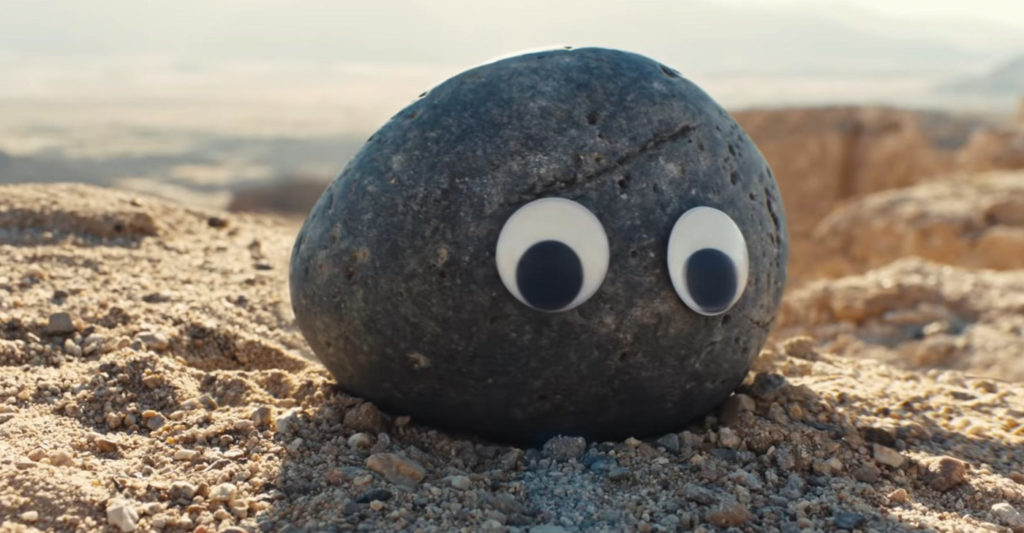
If there’s a lesson to take from this movie, take that lesson. Readers will let you go hog wild as long as you create characters we care about who have unresolved relationships with each other, that you then explore in an honest way (make their interactions feel like real life, not like soap operas). If you do that, you can get as crazy as you want, which this movie does.
Take the way you access your powers in this script. Remember, in the Matrix, you just dialed up your operator and asked him to upload a “helicopter pilot” program so you could fly a helicopter. Here, it’s way more involved. The way that the universes are connected is so complex that, to access them, you need to do very specific weird nonsensical things that the operator tells you to do, as randomness is the only way for the complex universes to connect to and access one another. So, for example, in one scene where Waymond needs fighting skills, he’s told he will have to give himself four paper cuts in between his fingers. Waymond then starts trying to paper cut himself before saying what we all know, which is that it’s impossible to give yourself a paper cut on purpose. It can only be done on accident. And yet, that is the only way he can access his multiverse doppelgänger’s powers, so he keeps trying until he gets it.
This weird and wacky way in which you access powers becomes a theme throughout the movie, as all the characters must do it. So all characters are constantly doing the weirdest things imaginable. Don’t get me started on the double butt-plug guard fight.

However, as weird as this was, the reason it worked is because the Daniels don’t treat it frivolously. They set the rules up but they play by them religiously. This is the difference between complex good and complex bad, is that with complex good, a lot of actual thought has been placed behind the choices, and then there’s a commitment to that choice for the entire movie. They don’t change the rules mid-stream just because it makes some other part of the plot easier to navigate.
This movie made me feel what it used to be like to go to the movies, where each experience when those lights went down meant you were going to see at least one thing you’ve never seen before. That was the magic of movies, that they could make you see and experience new things. Watch enough of them though, and you realize everybody just copies each other and, therefore, you never see anything new anymore.
Enter the Daniels and you don’t just see one new thing. You see dozens of new things. I mean, there is a love scene in this movie between Evelyn and Jamie Lee Curtis’s IRS character, where they’re in a relationship in another universe, and in this universe, everybody has hot dogs for fingers. Which means everyone has become really good with their feet, as feet have basically replaced hands. And the two are playing piano together, lovingly, with their feet, as their hot dog fingers drape across one another.

Where else are you ever going to see that?
To answer the original question, is this the best movie ever made? No. But it’ll probably be the best movie made in 2022. It is unique. It’s powerful. It’s thoughtful. It’s risky. I was talking with some people outside the theater afterwards and I asked this guy what he’d compare “Everything” to. He said that the first 60 minutes were like an indie version of The Matrix. But he said, after that, the movie is incomparable. You feel like you’re watching something that’s never been done before. I’d agree with that assessment. It’s just so its own thing. And I loved it.
[ ] What the hell did I just watch?
[ ] wasn’t for me
[ ] worth the price of admission
[x] impressive
[ ] genius
What I learned: As tempting to play with as plot and concept are, start from a place of “Who are these characters I’m following? What is it that’s broken within them that needs to be resolved? And what is it that’s broken in their relationships with others that needs to be resolved?” Really think hard about that and how you’re going to explore it in the movie. Because if you start with the plot and the concept and never really explore those three questions about your characters seriously, your script will always feel lifeless to some extent. If you’re not commenting on the human condition in some way… you’re not really writing a movie people will remember.
Is Leave The World Behind the next Get Out???
Genre: Slow Burn Thriller/Pre-Apocalyptic
Premise: A wealthy white liberal family renting an Air Bnb house in the country has their vacation rocked when a nationwide blackout occurs and an older black couple shows up at their door.
About: Leave the World Behind was a finalist in the 2020 National Book Awards. It quickly became a hot film package, with Sam Esmail (Mr. Robot) jumping in to direct and a cast that includes Julia Roberts, Ethan Hawke, and Mahershala Ali. This is a Netflix production and while Netflix is having their own ‘leave the world behind’ moment, which should affect future productions, I’m sure this one will remain on their slate.
Writer: Rumaan Alam
Details: 256 pages
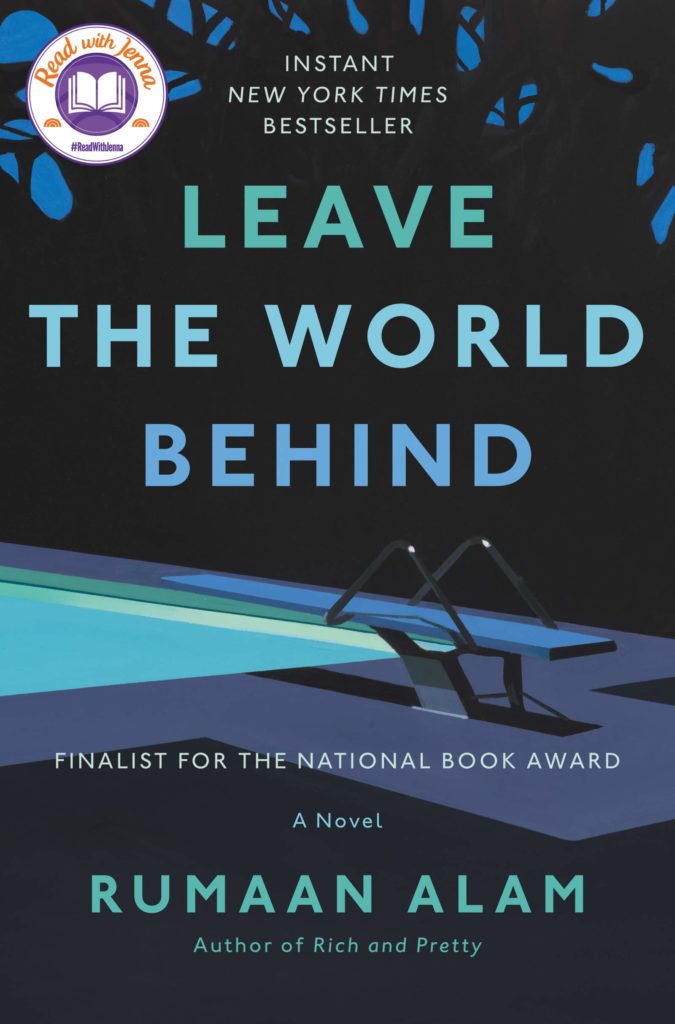
Was really excited to read this when I heard about it.
I’m always curious what Sam Esmail is working on and this sounded like a juicy-a$$ premise that’s right up my walkway.
Our story follows an upper middle-class Brooklyn family who’s spending a week’s vacation out in the middle of nowhere, a beautiful Air BnB home sitting amongst endless fields and forest. There’s Clay, the college professor father. Amanda, the mother with the cliched vague New York City job. And their kids, 15 year old Archie, and 12 year old Rose. From what we can tell, they are a very normal family.
Not long after they get to the house, there is news of a blackout on the East Coast, and then all phones and television go down. Nobody’s spooked yet but the first bit of fear creeps in when, later that night, an older black couple shows up at their door, George and Ruth. After some initial confusion, George and Ruth explain that they own this house and, while they live in the city, they turned back and came here when they learned of the blackout.
Clay wants to let them stay but Amanda is having none of it. She’s suspicious of the two immediately, even when it’s clear that they possess all the qualities of a cultured affluent couple. But with information on the blackout scarce and it seeming weird to kick two people out of their own house, they agree to let them stay downstairs for the night, until they figure out what’s going on tomorrow morning.
Except the next day only brings more confusion. A drive into town ends up in Clay getting lost. And then the first sign that something really bad is happening occurs – a long loud terrifying indescribable blast of noise. Everybody is legitimately freaked out at this point because nobody can begin to guess what the noise was.
As Clay huddles up with Amanda to figure out a plan, Archie grows sick, vomitting heavily. The group tries to decide if they should take him to the hospital (a full 45 minutes away) and while that decision is put on ice for a while, it accelerates the second Archie’s teeth fall out. It is then that both families learn that something is happening they’ve never seen before. And that the next 24 hours will be critical in figuring out – WHAT. DO. THEY. DO. NEXT?
So, to answer the question, “Is this the next Get Out?”, the answer is, sadly, no. And I say ‘sadly’ not because it tries to be and fails. But because it never tries at all. And, in my opinion, it should’ve been trying with all its might. Because when I left a comment on the Thursday post that I’d be reviewing this book, I’d just completed reading the hook of the story – a mysterious older black couple shows up on the steps of a liberal white family’s remote Air BnB.
It’s a delicious setup for so many reasons. First of all, you have this well-off white liberal New York family who claims to be the very essence of inclusive, yet from the moment the black couple show up, they’re suspicious of them, not entirely because they’re black, but at least partly so.
When it’s revealed that George and Ruth are the owners of the home, things get even more interesting. Think about how clever this setup is. You’ve rented a house – already given the owners their money. The end of the world may be happening. But then the owners show up. Whose house is it, at this moment? It’s a question on everyone’s mind but they’re all too polite to demand an answer. And since nothing drastic has happened yet, it’s a question they don’t have to deal with for the time being.
The promise of that question needing to be answered, though, is the very reason you keep reading. You just know these two families are going to go at it at some point.
Except that never happens.
If we were to measure the level of conflict between these two families over the course of the story (on a scale of 1 to 10) it never reaches above a 3. The families get along just fine, almost to an annoying degree. All I could think while I was reading this was, holy Moses did you miss out on a great opportunity.
Maybe the author didn’t want to go in the obvious direction of exploring a racially-charged conflict between a black and white family. But that doesn’t mean you should ignore any conflict between them whasotever! Conflict is drama. Drama is entertainment. Why would you actively avoid entertainment in a story?
Even the way that George and Ruth are introduced implies a story rife with mysteries and secrets about these two that will be revealed in time. Alas, there are no secrets. They’re just a normal wealthy couple who think and do normal things.
Once I realized that that wasn’t what the book was about, I was upset. But I eventually came around since I understood that this was more a meditation on family, specifically a well-off liberal white family, coming to the realization that all the things they held dearest and thought were important turned out to be useless when the shit hit the fan.
One of the featured chapters in Leave The World Behind has Clay driving into the nearby small town to see if he can gather information about what’s going on. Except all phones and GPS are down. So he quickly gets lost. All these country roads look exactly the same. Clay starts panicking, stopping his car at one point and internalizing that there’s a very real chance that he may never be able to ever find the house again.
This is when the book worked best, when it was dealing with our over-reliance on technology. Which made it all the more frustrating that it wasn’t able to find that same level of commentary when racial matters were involved. Amanda would occasionally think things such as, if George and Ruth were white, they never would’ve let them inside the house. But it was the guilt they felt at being perceived as racist that caused them to let the black couple in, a choice that had complicated an already complicated situation.
But these moments often lacked thematic continuity. In that aforementioned chapter of Clay driving around, his trip is punctuated by seeing a Mexican woman in a maid’s uniform flagging him down from the road. He stops for her and she starts crying to him, babbling in Spanish. Clay has had plenty of Mexican people clean his house and landscape his lawn. But he realizes he’s never actually talked to any of them and therefore has no way of understanding the woman, so he eventually just drives off.
I know there’s something being said here but what is it? White people pretend to care about minorities but when the shit hits the fan they don’t? Maybe it’s a commentary, specifically, on liberal hypocrisy? Except Clay never acts that way towards George, a man he quickly gains respect for. I don’t know. It was mushy.
Despite this, the script has a few plot beats that keep things fun. We get these big scary noises that rock everybody to their core, so we’re wondering what the hell those are. And the chapter that really got me was when Archie’s teeth fell out. I was putting myself in these parents’ shoes thinking, “What an absolute nightmare.” I mean, what do you do at that point? You’re in the middle of nowhere. You realize there are no doctors available to you. You have something happen to your child for which there is no reference point. That’s when I realized they were really screwed and I wanted to find out how this ended.
I’m not going to spoil the ending here but I will say it will be interesting to see if Sam Esmail keeps this ending or writes a new one. I suspect he’ll write something new. I just don’t think the current ending is the kind that will give a movie audience satisfaction.
But I do understand what Esmail saw in this. It’s a weird book and while it didn’t do what I thought it was going to do, the combination of it being thought-provoking and terrifying leads me to think it’ll work well as a movie. Especially with someone as talented as Esmail behind the camera.
[ ] What the hell did I just read?
[ ] wasn’t for me
[x] worth the read
[ ] impressive
[ ] genius
What I learned: Fear operates in the absence of information. The more information you give the reader, the less afraid they’ll be. It’s why a shark was so terrifying to a summer community in 1974 and it’s why these families’ situation is so terrifying in 2022. It’s risky, as a writer, to keep all the answers to yourself. But unless you have amazing answers that will shock an audience to its core, consider doing what Alam did, and keep everything close to the vest for as long as possible.
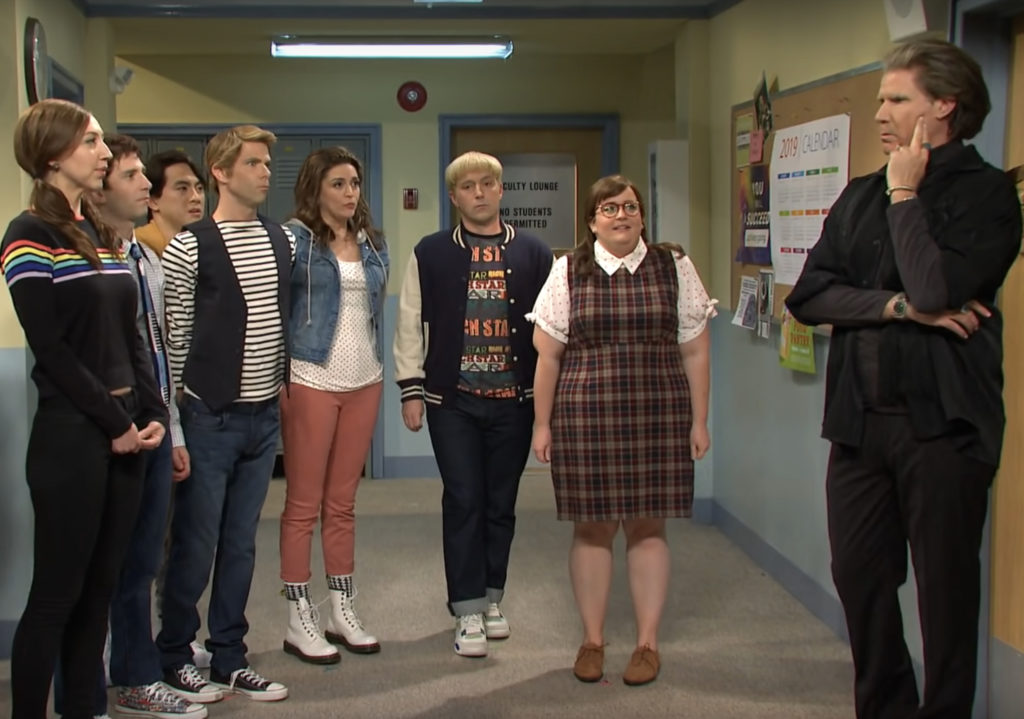
10 DAYS LEFT TO ENTER THE FIRST ACT CONTEST!
*******************************************************
What: The first act of your screenplay
Deadline: May 1st, 11:59 PM Pacific Time
Where: carsonreeves3@gmail.com
Include: title, genre, logline, any extra info you want me to know, a pdf of the act.
Cost: Free!
*******************************************************
Okay, on to more entries that failed to make the Anything Goes Amateur Showdown. The objective here is to take you behind the curtain so you can see what goes on in my head when I receive an entry. I’m hoping that by detailing the evaluation process, it will not only help the writers of these scripts improve their future loglines and queries, but help everyone here improve their loglines as well.
As always, if any of these scripts sound great, make sure to share that opinion in the comments. If something gets a ton of love, I’ll review it. Enjoy!
Title: Cheese Curls and Dirty Swimming Pools
Genre: Comedy
Logline: An elderly pool cleaner meets a naive young woman and introduces her to his world of psycho sexual deviancy and inadvertenly gets them entangled in a deadly mafia organization’s plot to assassinate a rival.
Why you should read: Anything goes? Well I think this definitley fits that description. A script 20 years in the making. Started off as a movie we actually made in high school and just kept rewriting. Funny. Dark. Strange. Twists and turns. Lets see if it all these years of working this thing can muster some laughs.
Why I didn’t pick it: This is an interesting one because the writer makes a good point. The showdown is called “Anything Goes.” That would imply that I want weird unique screenplays that take chances. Which is what Cheese Curls most definitely is. However, in doing this as long as I have, I’ve learned that while “kitchen sink” type loglines are fun, the number of writers who can actually deliver on the promise of that wackiness is miniscule. Whenever I pick one of these scripts up, they become incoherent within 20 pages. So I use the submission e-mail to decode whether this entry is an exception to the rule, or more proof of it. A few things stood out. “Inadvertenly” is spelled wrong. “Definitley” is spelled wrong. They’ve written “Lets” instead of “Let’s.” That’s three mistakes in less than a 100 word e-mail submission. That indicates a lack of attention to detail, which tells me I’m probably getting another incoherent kitchen sink mess. I also don’t like how the logline ends. A logline ending is important. Ideally, it’s the part of the logline that has the most punch. You want the reader leaving the logline thinking, “I have to read this!” Instead, the end of this logline is the least interesting part of the logline. 1) An elderly pool cleaner is a unique main character. 2) I like the contrast of a naive young woman entering into psycho sexual deviancy. 3) I’m not thrilled about the mafia element but, when combined with the other two elements, there’s potential there for an interesting clash. But then, out of nowhere, we’re assassinating some nameless generic rival. That sounds really boring and doesn’t connect to the rest of the logline in an interesting way. It absolutely destroys the logline and was the deciding factor for why I didn’t pick this.
Title: Meat is Murder
Genre: WWII / Sci-Fi-Action
Logline: The Nazis have created the Überhuman and are about to win WWII. David, a Jewish Wehrmacht soldier, who serves at the Eastern front under a false identity, must come to terms with his role as a Nazi-collaborator in order to prevent a global war of annihilation. “Django Unchained” meets “Valkyrie”.
Why you should read: What if Superman came down over the German Reich? –This script is set at the Eastern Front, told from the German perspective. The action set pieces are unique to the concept and backdrop and cannot be found in any other movie. It’s also a very weird script. In a way, I hope it’s weird enough to not be taken too seriously in the conventional sense, considering that the majority of the hideous atrocities of the Germans were committed in the East. I hope I have approached the subject matter with enough piety. Thanks in advance and kudos to everyone who participated.
Why I didn’t pick it: One of the harder loglines to write is the “mythology” logline. Science Fiction, Fantasy, Alternative Timelines, Long Ago Period Pieces. These loglines typically need you to set up the world before you tell us who the main character is, what his journey will be, and who stands in front of him. Which will often result in a two-sentence logline. Two-sentence loglines are doable. But they create challenges. You’re placing a period in the middle of a pitch that is supposed to flow from beginning to end. Because he’s dealing with the mythology issue, I don’t fault today’s writer for starting us off with, “The Nazis have created the Überhuman and are about to win WWII.” But when combined with the second sentence, there does seem to be a lack of enthusiasm to provide the reader with a clean effortless pitch. It’s clunky. And you don’t want your logline to be clunky. It implies to the reader that reading your script will also be clunky. Not to mention, the title doesn’t sound like it has anything to do with the story being pitched. That’s often a red flag. I might’ve tried to pull this logline off in one sentence: “A Jewish Wehrmacht soldier serving under a false identity must come to terms with his role as a Nazi-collaborator and prevent the German army from unleashing its newest weapon, the Überhuman.”
Title: Britt Johnson
Genre: Western
Logline: After Comanche raiders abduct his family, former slave Britt Johnson joins the Texas Rangers to bring them home.
Why You Should Read: This script was featured briefly in an Amateur Showdown on Scriptshadow. Since then, it has undergone numerous rewrites and the result is, I believe, an action-packed, gritty script that tells a story that few readers have seen or experienced before.
Why I didn’t pick it: I know. Confusing. This already made an Amateur Showdown once. So does that mean it’s an example of what’s good or what’s bad? The competition was stiffer this time around, which meant that each logline was put under more scrutiny. And this time, Britt didn’t make the cut. This logline shows you how even the simplest logline can be tricky to pull off. The first couple of times I read it, I thought the story was this: A guy’s family is abducted by Comanches. He’s able to get his family back, and now he’s going to “bring them home,” presumably traveling over a long distance where he and his family encounter many obstacles. But upon the third time reading it, I realized, “Oh, wait. He’s joining the Texas Rangers and they’re going to go to confront the Comanche, fight them, and get his family back.” The words “bring them home” did not convey that at all, which is why I was fooled. In my opinion, this is the most boring logline rendition possible for what sounds like a cool story. It’s your job as the writer to illicit that coolness in the logline. I would’ve gone with something like this… After Comanche raiders kill his son and abduct his wife and daughters, notorious former slave, Britt Johnson, joins the Texas Rangers to track down the Comanche and save his remaining family at all costs.
Title: PIZZA DELIVERY GUY
Genre: Contained action-thriller
Logline: When a suburban family home is invaded by a group of serial killers it seems certain that every captive will die horribly, but then the killers decide to order pizza…
Why you should read it: An actor who has starred in many action films read the script, really liked it, and wants to play the pizza delivery guy.Now the script is with two directors, who are currently deciding whether to become attached to the project.
Why I didn’t pick it: Our greatest strength as writers – that we live in our head – is also our biggest weakness. We often lack the ability to see our scripts, our pitches, our loglines, through the eyes of a reader who has no reference whatsoever for what we’ve put in front of them. As a result, we can’t identify what it is they may not get. “Pizza Delivery Guy” is labeled a “Contained Action-Thriller,” yet everything about the logline screams, “Goofy Comedy.” When I can’t match up the logline to the genre, I take the easy way out and move on to the next submission. In other words, if you’re going to pitch your story as an Action-Thriller, the logline should read like so. Also, this logline needs more information. “…but then the killers decide to order pizza…” can literally lead to 10 million different scenarios. The pizza guy shows up and… what? What does he do? This is, presumably, going to be 75% (or more) of your movie. You can’t leave that much of your movie unanswered in the logline. This is why writers need to get logline feedback. You’re shooting yourself in the foot.
Title: BREAKOUT
Genre: Thriller
Pages: 86
Logline: When a young woman is sealed inside her estranged Father’s property and outnumbered by intruders, she has no choice but to go deeper inside both the house and her past if she wants to get out alive.
Why You Should Read: This script was a semi-finalist in last year’s Final Draft Big Break contest. So per Carson earlier this week, is this a sign I should start looking for houses in the hills cause I’m about to hit it big?
Why I didn’t pick it: This script was one special attractor away from getting picked. What’s a “special attractor?” That’s the unique x-factor in your concept, the thing that separates it from everything else. It’s a family living silently in a world where monsters attack through sound. It’s a dinosaur theme park. It can even be a fairly new addition to popular culture, like the panic room was back in 2002, when David Fincher made the Jodie Foster contained thriller. Going “deeper inside a house” is just a fancy way of saying, “running around a house.” It doesn’t provide us with anything new or fresh in the genre. That’s not to say the script isn’t any good. You might have nailed the character development. But this is why flashy concepts are so valuable. They get more people wanting to read your script! The less flashy the concept is, the less people will want to take a look. It’s as simple as that. Either way I would encourage the writer, Kim, to get a logline consult if there’s more to this story, or get feedback from the community. Cause if the script is good enough to make the semi-finals of a contest, you need a logline that’s going to get more people to read it.
Title: In the Cold, Cold Night
Genre: Murder/Mystery/Whodunnit
Logline: With the world on the brink of a biblical apocalypse, a loose cannon alcoholic in a small Texas town tries to solve an old murder case to exonerate the primary suspect, her father, before the end of days.
Why you should read: It explores the hypocritical Texas towns I grew up in where religion is the only thing that matters and shitty people are considered saints just because they go to church on Sundays. This is a gold star example of writing what you know. It got an 8 on the Blacklist with a first draft in which the reader said “An impeccable sense of atmosphere and a compelling mystery put this script in good company with prestige shows like True Detective and Sharp Objects.”
Why I didn’t pick it: Getting an 8 on the Black List isn’t easy to do. And just from the way the writer communicates, I get the sense that this could be good. It’s been a while since I evaluated this entry, but I think the reason I passed was because the movie’s setup invites a great big, “So what?” to the primary objective of the story. Who cares if you exonerate your father if the world’s about to end anyway? It’s like me writing a movie called, “Go For The Gold,” about an aging runner who tries to win the Olympic 40 yard dash a day before aliens come and destroy the planet. Sure, he won the gold but… why did it matter exactly? I still think this script could be good but that’s why I chose not to feature it.
Title: The Boneyard
Genre: Thriller.
Logline: A purveyor of serial killer memorabilia must crack a case of missing murder victims to save his kidnapped daughter while hounded by the FBI as the main suspect.
Why You Should Read My Script: This is a gripping, edge-of-your seat thriller with a solid three-act structure, a twisty and complex plot moving the story along at a good pace, with a ticking clock, and life-and-death stakes from start to finish.
Why I didn’t pick it: This submission reads like it was constructed out of a bunch of buzzwords and buzz-phrases. “Serial killer memorabilia.” “Crack a case.” “Missing murder victims.” “Save his kidnapped daughter.” Even the WYSR sounds this way. “Edge-of-your-seat.” “Solid three-act structure.” “Complex plot.” “Ticking clock.” “Life-and-death stakes.” “From start to finish.” The title suffers the same fate (“The Boneyard”). Your script is not going to be celebrated for all the things that it does that are familiar. It’s going to be celebrated for all the things about it that are unique, that stand out. So if you don’t have anything unique to offer, your script is going to sound generic, which is how this sounds. When it comes to loglines, identify what it is that’s unique about your idea and BUILD THE LOGLINE AROUND THAT.
Title: Science vs Romance
Genre: Sci-Fi/Romance
Logline: When a burnt out screenwriter is hired to help fix the world’s first simulated reality program she inadvertently jeopardies existence by falling for the subject.
Why you should read: I’ve been writing scripts for a few years now but mostly thrillers, I thought for this contest I’d send the one script where I took a real chance and tried something really different (for better or worse).
Why I didn’t pick it: This logline fails for the simple reason that, after you read it, you’re not entirely sure what the author meant. A writer is hired to fix a simulated reality program. So far, so good. She then jeopardies (I’m assuming we meant jeopardizes) existence by falling for the subject. By “existence” are we talking about the simulated existence or actual existence? If I’m to take the logline literally, I’m assuming actual existence, although I don’t know how diddling around with a simulation program would affect reality. And this “subject.” What subject? What does that mean? One of the fake people inside the program? Or maybe the creator of the simulated reality? It’s anyone’s guess because it definitely isn’t clear. I don’t think you guys realize how common this is. I get submissions like this all the time where I don’t 100% understand the idea so it’s easy to say no. Get your loglines looked at ahead of time so you don’t make mistakes like this!
Title: BLACK MOLD
Genre: Sci-fi/Thriller (TV pilot)
Logline: A lonely Korean janitor exposed to an interdimensional spore that enables her to see aliens mimicking people must hunt for the key to prove her sanity and save the world from total hive-mind colonization.
Why you should pick: If titles like THEY LIVE and MIMIC make you salivate, but you’re looking for something more, imagine a world in which only a handful of people have discovered the majority of humans around them aren’t humans at all, but are masquerading aliens bent on enslaving the human race, but then imagine that all this is taking place in a version of reality that was split off from ours back in 1978, and there’s only one way to reset Reality itself back to what it was before the aliens arrived: by exploding a nuclear bomb outside of Las Vegas. Combining quantum physics, alien body-mapping tech, hallucinogenic digital mold, conspiracy theories and one cantankerous Korean lady with an axe to grind, Black Mold may just be your cup of miso soup.
Why I didn’t pick it – I went back and forth on this one. If it was a feature, I probably would’ve chosen it. As I like to remind everybody, pilots are eligible for Amateur Showdowns. But they have to be twice as good to get chosen. I will say that the more I read about this story (in the “Why you should pick” section), the more leery I became. The second you say that this secret alien race angle is spun off from a different timeline back in 1978, I immediately move this over into the “too complicated” folder. True, it’s different. But it doesn’t feel organic. It instead feels forced. Whenever I come across creative choices that feel forced, I always pull away. With that said, it’s a TV show. Which means you have more time to lay the foundation of the mythology before moving on to some of the wilder creative twists. So maybe this makes sense when it plays out over four seasons. But it’s a lot to take in in a single 150 word pitch. “Black Mold” is a good glimpse into how people assess ideas. You often go back and forth and back and forth on whether to choose something, and if there’s any hesitation at all – about a character, about the plot, about a creative choice – you use that as a reason to pass. Not because you’re an evil person who hates writers. But because you only have so much time in the day and there are many more scripts to get to.
Title: Empathy In An Uncanny Valley
Genre: (Sci-Fi, Drama, Thriller)
Logline: A robot detective that believes in God has sex and vapes seeks help with mental health issues from a police psychiatrist.
My Reason: I think you should read my script because of the logline! A religious robot that has sex and vapes; now that your mind is in the gutter — you know you wanna read it!
Why I didn’t pick it: I really wanted to pick this because the writer, who’s also a director, is starting to have some success and seems like a really cool dude. And the script sounds unique. But the logline isn’t giving me enough. Think of it from my perspective. I’ve just read this logline, right? What is the movie I’m imagining from it? A robot walking around vaping, sometimes having sex, and then having long drawn out therapy sessions with a therapist? Where’s the plot? Where’s the goal? Where is the bigger objective? One of the things I always say if you’re writing a small character-driven story where the focus is more on the internal than the external, is throw in a dead body somewhere. A murder. It gives your story instant pop and direction (someone’s going to have to investigate that murder – your protagonist could either be the investigator or the investigated), yet it still allows you to do all that character introspection that drew you to the idea in the first place. But if all you’re going to do is have a character walk around and do normal everyday things, most audiences are going to tell you that’s not enough.
Having concerns about your own logline? Let me help you with it. Logline consults are just $25 (and if you buy 4, you get a 5th for free). I also provide consultations for each stage of the screenplay journey: outline ($99), first 10 pages ($75), first act ($149), full pilot ($399), full screenplay ($499). I’ve read thousands of screenplays, including all the ones that get produced and all the ones that don’t. There’s no one better equipped to help you improve your script than me. If you’re interested in getting a consultation, e-mail me at carsonreeves1@gmail.com and let’s work together!

